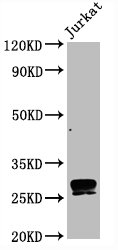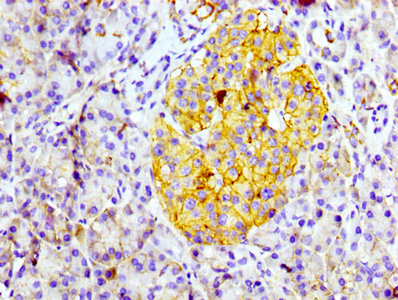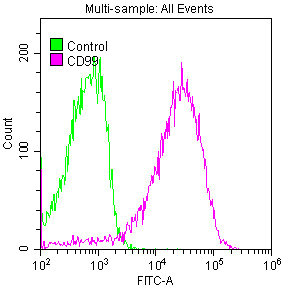The CD99 recombinant monoclonal antibody is produced using advanced protein technology and DNA recombinant techniques. It begins with immunizing animals with a synthesized peptide derived from human CD99, followed by the isolation of B cells. From these B cells, positive ones are selected and subjected to single clone identification. The genes encoding the light and heavy chains of the CD99 antibody are then amplified using PCR and inserted into a plasmid vector. This recombinant vector is introduced into host cells for antibody expression. The CD99 recombinant monoclonal antibody is purified from the cell culture supernatant using affinity chromatography. It undergoes rigorous validation to ensure its accuracy and reliability for ELISA, WB, IHC, and FC applications. This product is specifically designed to target the CD99 antigen in human species, making it an essential tool for researchers in the field of immunology.
CD99, also known as MIC2, is a transmembrane protein that is extensively O-glycosylated and found on leukocytes and active endothelium. CD99 regulates cell adhesion and migration, cell death and differentiation, intracellular protein trafficking, endocytosis, and exocytosis, among other important biological processes. CD99, in particular, functions as an oncosuppressor in tumors or as a prerequisite for cell malignancy. CD99 has been shown to have an impact on tumor cell differentiation, migration, invasion, and metastasis.








